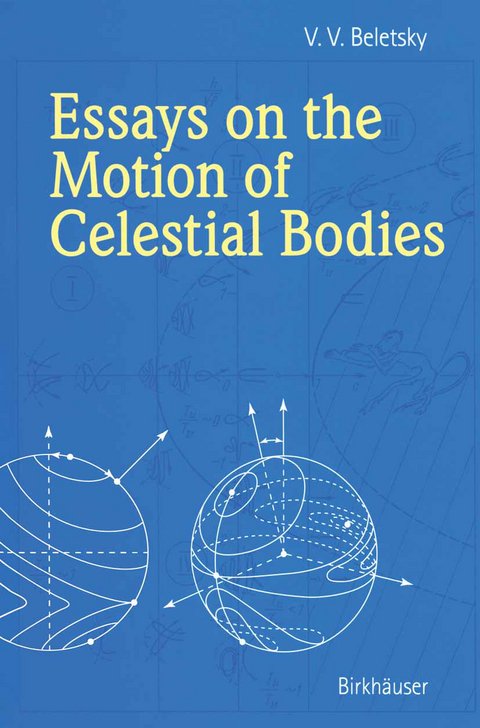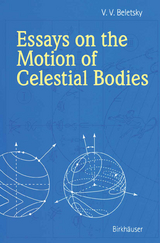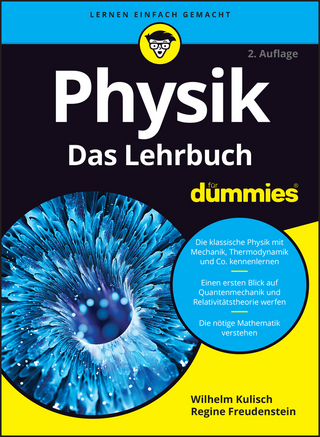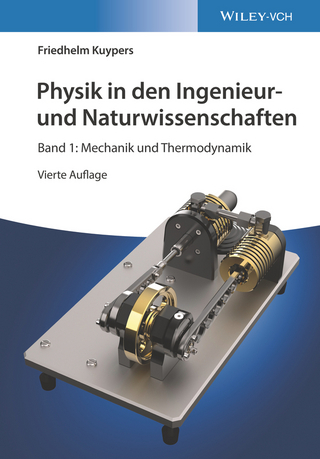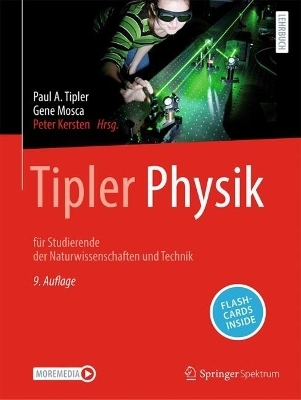Essays on the Motion of Celestial Bodies
Springer Basel (Verlag)
978-3-7643-5866-2 (ISBN)
The development of the mechanics of space flight brought to life a whole series of fascinating and novel problems. The purpose of this book is to present some interesting and often unexpected achievements that have allowed some classical problems to be reconsidered in a new light. In order to reveal the beauty of the research process leading to the results, the emphasis is put on the analysis that can be carried out on the level of graphs and drawings, and sometimes numbers. Whenever possible, the investigation relies on maximally intuitive, elegant geometric tools. The book can be read profitably by anyone with the mathematical background typically offered in the first few years of undergraduate studies in mathematics, physics and engineering, including students, teachers, scientists and engineers. From the review of the first edition in Priroda by V.I. Arnold and Ya.B. Zeldovich: "...For a solid scientific monograph, V.V. Beletsky's book is out of the ordinary in many respects. Without exaggeration we can say that it marks the affirmation of a new style in the scientific literature. The author explains in a frank and detailed manner the reasons behind each calculation, its difficulties, and the psychological side of research. ...The general impression that the "Essays" make is not that of a boring lesson, but rather a discussion with a brilliant, knowledgeable and wise interlocutor."
First Essay. On the unperturbed and perturbed motion of a satellite, with a digression on asymptotic methods of nonlinear mechanics.- 1. Lucky us!.- 2. Keplerian motion.- 3. Perturbed motion. Osculating elements.- 4. Osculating orbit of an equatorial satellite.- 5. The equations in osculating elements. Delaunay elements.- 6. Digression on asymptotic methods of nonlinear mechanics. Oscillations of a satellite about its center of mass. Averaging of canonical equations.- 7. Satellite in the gravitational field of Earth.- Second Essay. On the rebirth of an old problem, or what happens if two masses are placed at a purely imaginary distance from one another.- 1. From Euler to our days.- 2. The connection between the two problems.- 3. Integration. Coordinate system.- 4. The Hamilton-Jacobi method.- 5. Integration.- 6. The region of motion of a satellite.- 7. Jacobi's elliptic functions.- 8. The motion of a polar Earth satellite.- Third Essay. Yet another reincarnation of an old problem.- 1. And what sort of problem is that?.- 2. Briefly on the equations of motion and their integration.- 3. Plane motion.- 4. Description of the trajectories of plane motion.- 5. A few words about the influence of radiation pressure on the motion of Earth satellites.- Fourth Essay. Motion of the worlds.- 1. One more time about the "Laplace Theorem" and other [Serious] "Things".- 2. Wouldn't you like to see the Moon fall on Earth?.- 3. The region of weakly-perturbed motion.- 4. Stability of the Solar System.- 5. Is the Solar System resonant?.- Fifth Essay. The restricted three-body problem, flight to the Moon, and galactic evolution.- 1. The Hill surfaces.- 2. Digression on libration points.- 3. Moon intercept trajectories and a method for their investigation.- 4. Galactic evolution.-Sixth Essay. They are waltzing in orbits.- 1. Gravitational potential.- 2. Rotation of the Moon. Background material on stability theory.- 3. Stability of relative equilibrium in a gravitational field.- 4. Rhinogradentia in orbit 151.- 5. Passive stabilization of artificial satellites.- 6. Nonlinear oscillations.- 7. Fast rotations.- 8. Where the author slightly frightens the reader.- 9. Explicit form of the perturbed motion.- 10. Pegasus.- 11. Moon, Mercury, resonances.- 12. Schiaparelli and others.- 13. Resonant rotations of celestial bodies and the generalized Cassini laws.- 14. Tendency toward synchronization of rotational motion in complex gravitational fields. Lunar-solar precession and nutation of the Earth's axis.- 15. A model of tidal phenomena and capture into resonant rotation.- 16. Magnetic and magneto-gravitational stabilization.- Seventh Essay. In a spiral to space.- 1. Low thrust.- 2. Escape parameters and paradoxes.- 3. A monotone escape spiral.- 4. Arbitrary trajectories with small eccentricities.- Eighth Essay. The full force of the sun blows in the sails.- Ninth Essay. The gravity flyer.- 1. Force of attraction on a body of non-negligible dimensions.- 2. A pulsating spaceship.- 3. Left behind by your spaceship? Swim breaststroke!.- 4. The gravity flyer and the reader.- 5. The gravity flyer as a resonance phenomenon.- 6. The gravity flyer and writers.- Tenth Essay. Interplanetary flights: low trusts for high goals.- 1. Prelude.- 2. Larger payloads, less fuel.- 3. The Pontryagin maximum principle.- 4. The equation of optimal flight.- 5. No constraints.- 6. The method of carrier trajectories.- 7. The scheme for solving the boundary value problem.- 8. Integration.- 9. Some problems of relative motion.- 10. Computational results for optimalinterplanetary trajectories.- 11. Presentation of results of the computation of series of trajectories.- 12. Correction of interplanetary trajectories.- Eleventh Essay. Relative motion of orbiting bodies.- 1. In orbit - two satellites.- 2. The equations of relative motion.- 3. Free motion of an astronaut relative to his spaceship.- 4. Leonov and the lens cap.- 5. Space probe.- 6. Boleadoras in space.- 7. The evolution of mixed motion.- 8. System of linked bodies in space.- 9. Cloud of particles in orbit and the Poincaré recurrence theorem.- Twelfth Essay. Cosmic pinwheel.- 1. The Proton satellites.- 2. Here is how all this was discovered.- 3. What was discovered.- 4. Here is how all this is explained.- References.- Author index.
| Erscheint lt. Verlag | 1.8.2001 |
|---|---|
| Übersetzer | A. Iacob |
| Zusatzinfo | XVIII, 372 p. |
| Verlagsort | Basel |
| Sprache | englisch |
| Maße | 155 x 235 mm |
| Gewicht | 730 g |
| Themenwelt | Naturwissenschaften ► Physik / Astronomie ► Allgemeines / Lexika |
| Technik ► Luft- / Raumfahrttechnik | |
| Schlagworte | astrophysics • Celestial mechanics • Evolution • Mathematics • Pontryagin-Type • Potential |
| ISBN-10 | 3-7643-5866-1 / 3764358661 |
| ISBN-13 | 978-3-7643-5866-2 / 9783764358662 |
| Zustand | Neuware |
| Haben Sie eine Frage zum Produkt? |
aus dem Bereich
